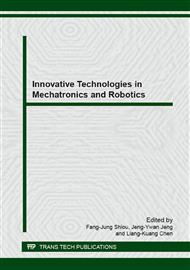p.60
p.66
p.74
p.82
p.90
p.97
p.104
p.112
p.120
Optimization of the Surface Roughness and Superficial Hardness Improvement Using the Hybrid Grey-Based Taguchi Method for the Small Ball-Burnishing Process of STAVAX
Abstract:
This study aims to optimize the small ball-burnishing process parameters in order to simultaneously improve the surface roughness and superficial surface hardness of the STAVAX material. A newly developed load cell embedded double spring mechanism burnishing tool was designed and fabricated. By utilizing the hybrid grey-based Taguchi method with principal component analysis (PCA) and entropy measurement the optimal process condition was the combination of the burnishing force at 10 N, the step-over at 6 μm, the number of passes at 3 times, the grease for lubricant, and the burnishing speed at 500 mm/min. The burnishing force, step-over, and the number of passes were found to have the main effects on the burnished surfaces among the five chosen control factors. The burnished surface of STAVAX material under the optimal condition was improved from Ra 0.85 to Ra 0.079 for average surface roughness, and from 67.3 HR30N to 72.7 HR30N in term of superficial hardness.
Info:
Periodical:
Pages:
112-119
Citation:
Online since:
June 2015
Authors:
Price:
Сopyright:
© 2015 Trans Tech Publications Ltd. All Rights Reserved
Share:
Citation:


